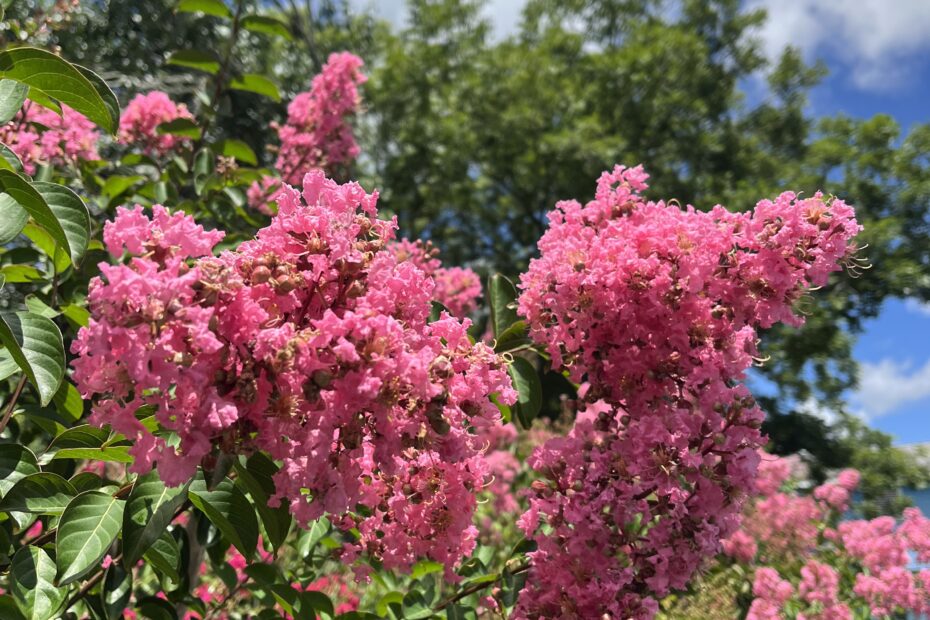Crape Myrtle’s are blooming like crazy across Galveston County! Here are few tips to keep your Crape Myrtle thriving!
🌳 Planting
- Sunlight: Choose a spot with full sun (6+ hours/day) to encourage strong blooming and prevent powdery mildew.
- Soil: Well-draining soil is key. Crape myrtles are adaptable but prefer slightly acidic to neutral pH.
💧 Watering
- Young trees: Water deeply once or twice a week during the first year.
- Established trees: Drought-tolerant but benefit from occasional deep watering in extended dry spells.
✂️ Pruning
- When: Late winter (January–February) before new growth begins
- How: Remove suckers, dead branches, and crossing limbs. Avoid severe topping (“crape murder”—it weakens the plant and ruins its natural form.
🌺 Fertilizing
- When: Spring and early summer.
- What: Use a balanced slow-release fertilizer (like 10-10-10) sparingly to avoid excessive leaf growth at the expense of blooms. We recommend Nelsons Crape Myrtle fertilizer for maximum blooms!
🐛 Pests & Disease
- Watch for: Aphids (which cause black sooty mold), powdery mildew, and bark scale.
- Treatment: Horticultural oil or insecticidal soap for aphids; neem oil for mildew. If you see bark scale, gently scrub with warm water and spray with dormant oil in winter.
🔁 Deadheading
- Optional but helpful. Removing spent flower clusters may encourage a second bloom in late summer.
